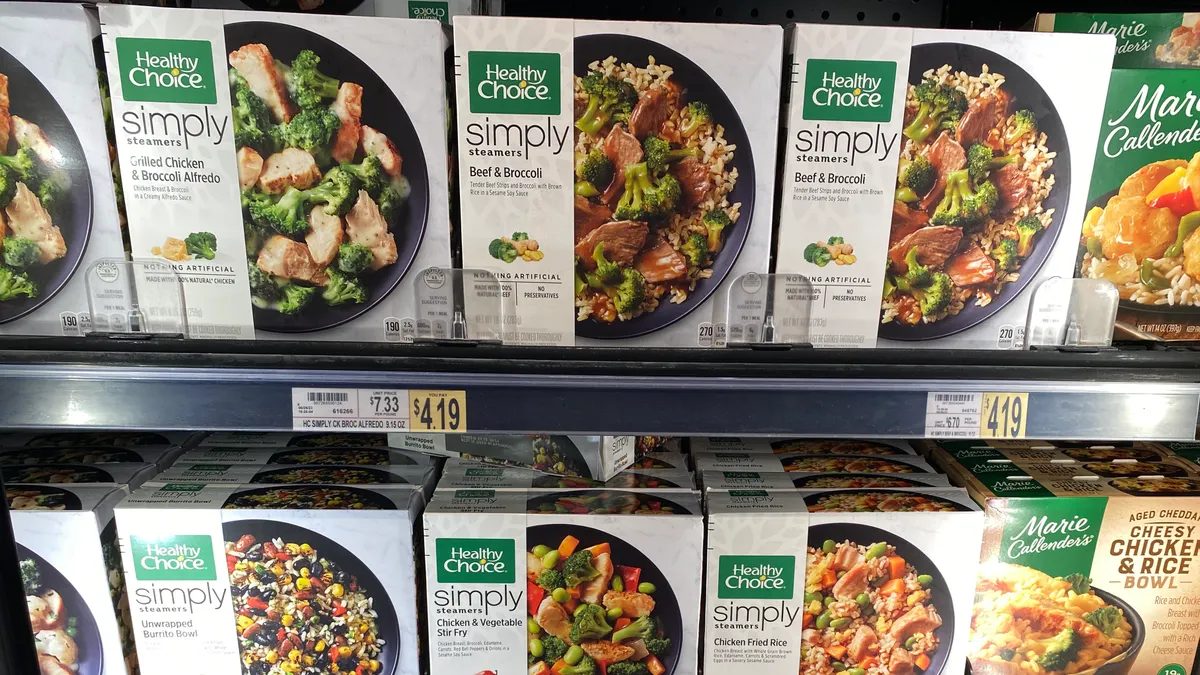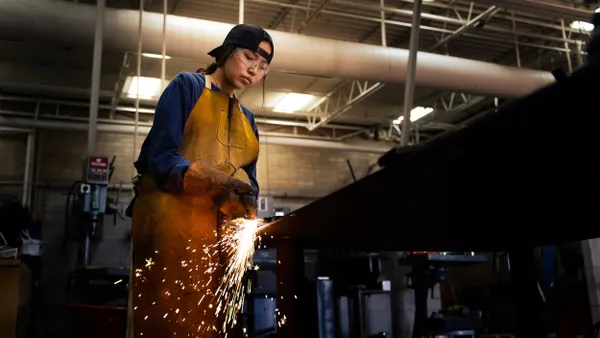Dive Brief:
- Chicago-based Conagra Brands is forecasting cost of goods sold inflation to remain elevated in fiscal 2026, with a 4% core inflation rate combining with a 3% rise due to tariffs bringing the total COG inflation to about 7%, according to the company’s Thursday earnings release. The company’s fiscal year kicked off on May 26.
- While the food-and-snacks company characterized the tariff situation as “fluid,” its guidance expects a 50% tariff rate on imported tin plate steel and aluminum, a 30% rate on limited imports from China and a 10% reciprocal rate on imports from certain other unnamed countries, according to the release. Currently, tariffs are expected to add more than $200 million annually to COGs, CEO Sean Connolly said, according to a transcript of a conference call Thursday morning.
- Asked to detail the drivers of the core inflation, Conagra CFO Dave Marberger said animal proteins such as beef, chicken, pork, eggs and turkey had the “single biggest impact,” with the costs expected to be “inflating double digits” in fiscal 2026 based on current estimates.
Dive Insight:
The company’s guidance comes as it reported its fiscal Q4 and fiscal year 2025 period, which ended May 25, saw net sales drop 4.3% and 3.6% year-over-year respectively. The fiscal year’s environment “proved to be more challenging than we anticipated,” Connolly said in a statement in the release, which cited higher-than expected inflation, foreign exchange headwinds and supply constraints which impacted the company in the second half.
Last month, the finance chief of the maker of Slim Jim snacks and Vlasik pickles noted at a conference in Boston that the company was looking to mitigate steel tariff’s impact on cans Conagra uses to package many of its products, but declined to detail its approach.
On Thursday during a conference call with analysts, Marberger noted that the company anticipated it could mitigate part of the tariff impact by looking for alternate supplies, potentially negotiating with the suppliers to share in this cost and finding other ways to potentially “reduce the usage of the items that are being tariffed.”
Asked about declining sales, Connolly said the company was looking to “get volumes healthy,” maximize cash flow on its canned food business and with innovation look to start getting some “relief” with regard to margins. Looking ahead, Marberger also said the company keeps an eye out for falling volumes and always looks to try to consolidate its network to minimize overhead costs. At the same time the executives said the company has been investing in making its supply chain more robust.











